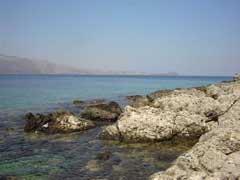 Water Supply Crisis maintains its position as one of the top 5 global risks according to WEF (Davos)
Water Supply Crisis maintains its position as one of the top 5 global risks according to WEF (Davos)
The aim of this report, is to present a prototype framework to measure a country’s overall resilience via a five-part initial framework, depicted in Figure 23. This framework considers the country as comprised of fivexxiii core subsystems:xxiv
- Economic subsystem: includes aspects such as the macroeconomic environment, goods and services market, financial market, labour market, sustainability and productivity. 10
- Environmental subsystem: includes aspects such as natural resources, urbanization and the ecological system.
- Governance subsystem: includes aspects such as institutions, government, leadership, policies and the rule of law.
- Infrastructure subsystem: includes aspects such as critical infrastructure (namely communications, energy, transport, water and health). 11
- Social subsystem: includes aspects such as human capital, health, the community and the individual.
As depicted in Figure 23, each of the five subsystems is assessed further using five components of resilience: 1) robustness, 2) redundancy, 3) resourcefulness, 4) response and 5) recovery.xxv These five components can be categorized further into two types: resilience characteristics (robustness, redundancy and resourcefulness) and resilience performance (response and recovery). The measurement of these components presents a significant research challenge, as there are many attributes underpinning each of them, and these attributes are overlapping and complementary (Appendix 3 identifies potential qualitative and quantitative indicatorsxxvi).
This report has adopted one approach from the World Economic Forum’s annual Global Competitiveness Report (GCR), which measures the microeconomic and macroeconomic foundations of national competitiveness.xxvii Similar to the concept of national resilience, the measurement of national competitiveness uses data from both international sources as well as from the Forum’s annual Executive Opinion Survey (EOS) to capture concepts that require a more qualitative assessment, or for which internationally comparable statistical data are not readily available. For the purposes of this inaugural effort, we started the analysis by using data from EOS to assess components of national resilience.xxviii
| Contact information | n/a |
|---|---|
| News type | Inbrief |
| File link |
http://reports.weforum.org/global-risks-2013/ |
| Source of information | World Economic Forum (Global Risks 2013 8th Edition) |
| Subject(s) | AGRICULTURE , ANALYSIS AND TESTS , CHARACTERISTICAL PARAMETERS OF WATERS AND SLUDGES , DRINKING WATER , DRINKING WATER AND SANITATION : COMMON PROCESSES OF PURIFICATION AND TREATMENT , ENERGY , FINANCE-ECONOMY , HEALTH - HYGIENE - PATHOGENIC MICROORGANISM , HYDRAULICS - HYDROLOGY , INDUSTRY , INFORMATION - COMPUTER SCIENCES , INFRASTRUCTURES , MEASUREMENTS AND INSTRUMENTATION , METHTODOLOGY - STATISTICS - DECISION AID , NATURAL MEDIUM , POLICY-WATER POLICY AND WATER MANAGEMENT , PREVENTION AND NUISANCES POLLUTION , RIGHT , RISKS AND CLIMATOLOGY , SANITATION -STRICT PURIFICATION PROCESSES , SLUDGES , TOOL TERMS , TOURISM - SPORT - HOBBIES , WATER DEMAND , WATER QUALITY |
| Relation | http://www3.weforum.org/docs/WEF_GlobalRisks_Report_2013.pdf |
| Geographical coverage | n/a |
| News date | 10/01/2013 |
| Working language(s) | ENGLISH |
 you are not logged in
you are not logged in





